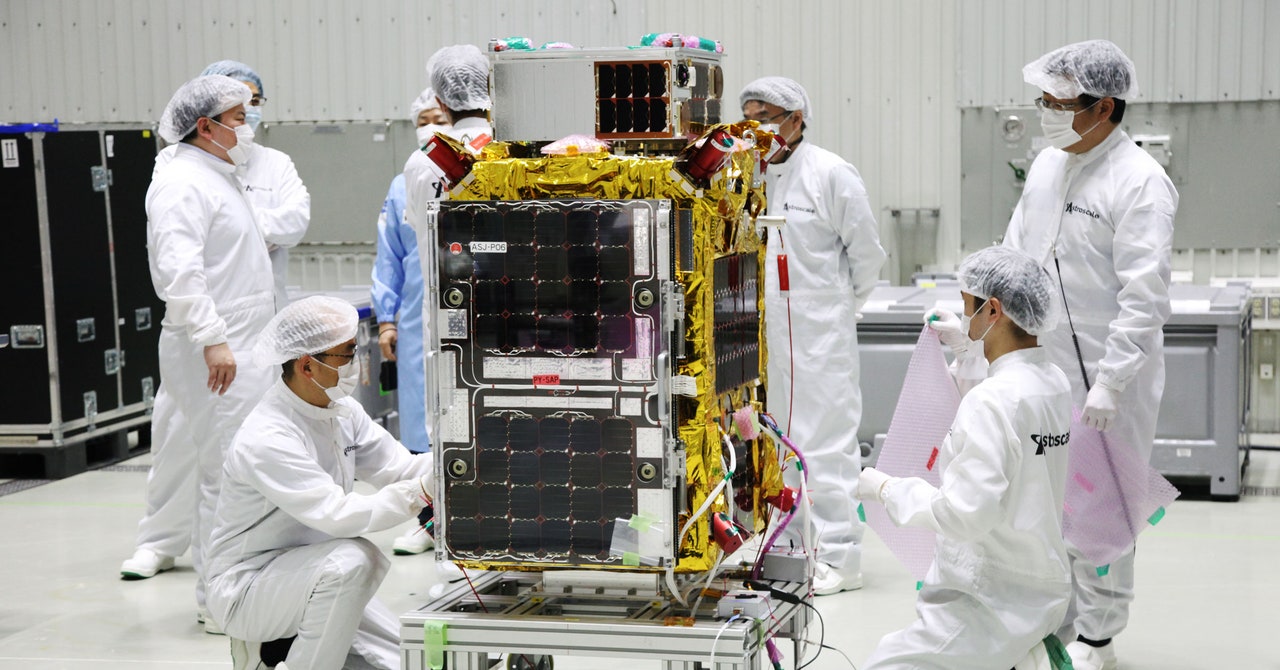
Could the solution to eliminating dangerous space junk be a mini-fridge-sized spacecraft equipped with a big magnet, or maybe an orbiting tug that sends out a swarm of tentacles to trap a spent rocket?
If all goes well, schemes like these may be the first steps in removing the growing constellation of metallic refuse orbiting Earth. There are at least 23,000 pieces of discarded payloads, rocket bodies, and other debris greater than 10 centimeters long circling the planet, according to NASA estimates, with another 500,000 smaller objects that range between 1 and 10 centimeters. These are all moving at least 18,000 miles per hour and can stay aloft for decades before reentering Earth’s atmosphere and burning up. While in orbit, they pose a risk to commercial communications satellites, scientific and weather orbiters, and of course the International Space Station, which is currently home to seven astronauts.
In 2020, two defunct satellites missed hitting each other by a mere 40 feet about 550 miles above Pittsburgh, while a non-operational Russian satellite and an Iridium communications satellite collided in 2009 over Siberia. As a result, national space agencies and commercial firms are gearing up to sweep away space objects before something worse happens. Officials at NASA recently issued a handbook on how to avoid crashes for commercial satellite providers, and this month the agency signed an agreement with SpaceX to ensure that both prioritize safety during launches and orbital maneuvers. The agreement is a way to make sure that one party’s satellites aren’t parked over the other’s launch sites or planned spacecraft trajectories, which could lead to collisions that would generate even more debris. The Pentagon might even pay commercial firms by the ton to remove space junk, according to a recent report in SpaceNews.
On March 22, Astroscale, a Tokyo-based startup collaborating with Japan’s space agency, JAXA, launched a magnetic space trash picker-upper called the End of Life Services by Astroscale demonstration, or ELSA-d. The project consists of two spacecraft. One is a 386-pound mini-fridge-sized servicing satellite armed with a magnet. The other is a smaller, 37-pound client satellite, which is shaped like several pizza boxes stacked upon each other and has a round magnetic plate. Their first flight is a demonstration mission, designed to test how well the bigger satellite can chase and capture the smaller one, which is playing the role of a practice target. The two were attached when they launched, but once all the systems have checked out in a few months, the servicer will release the client into its own orbit. Operators on the ground will maneuver them into a rendezvous so the magnet on the bigger satellite gets close enough to attach itself to the plate on the smaller one.
If all goes well with the meet-up when both objects are moving stably, a second phase of the project will involve sending the smaller machine into a tumbling orbit, making it harder to capture. Once again, the bigger satellite will have to find and grab it using the magnet. This task is more difficult and is meant to prove to potential customers that Astroscale can successfully capture debris that is moving erratically through space. After that second capture, the two spacecraft will then enter a joint orbit and harmlessly burn up in the Earth’s atmosphere.
Future versions of the Astroscale system could be used to remove a specific company’s dead satellites, or just clear a particularly crowded patch of space that might menace a commercial or space agency’s mission. But Astroscale’s solution of using magnets to let one satellite grasp another will only work if satellite operators attach the company’s magnetic plate to future orbiters, like adding a trailer hitch for a space-bound tow truck.


